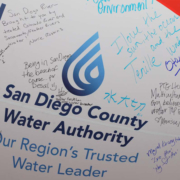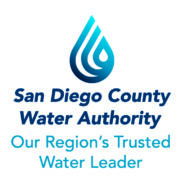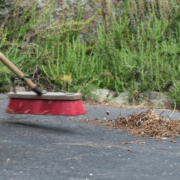Updated water-use projections for the San Diego region through 2040 are substantially lower than earlier forecasts due to efficiencies that have become standard practice at homes and businesses countywide.
That’s good news because it signals the potential for lower spending on water supply development and delivery in coming decades compared to previous forecasts.
The revised demand forecast by the San Diego County Water Authority also highlights how the region continues to align with state mandates for water-use efficiency even after nearly three decades of significant savings. Per capita potable water use in the Water Authority’s service area declined nearly 50 percent between fiscal years 1990 and 2017.
Changing Water-Use Habits Prompt ‘Reset’
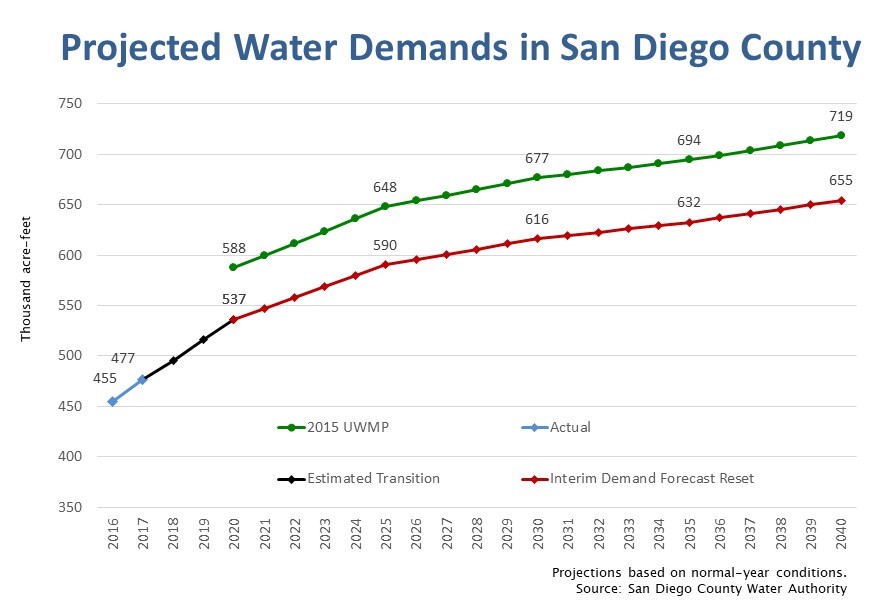
Project water demands in San Diego County based on normal-year conditions. Graphic: Water Authority
Revisions to the region’s water demand forecast were designed to align the Water Authority’s planning document with current water-use trends. Through the Urban Water Management Plan, the agency updates demand forecasts every five years, with the next comprehensive update in 2020.
However, emergency state regulations related to the 2012-2016 drought combined with the ongoing transformation of the landscaping market toward low-water-use designs and other factors significantly lowered water use between the formal five-year planning periods. That change prompted the interim demand “reset” by the region’s water wholesaler.
Instead of projecting 588,000 acre-feet of demand in 2020, the Water Authority now anticipates demand will be at 537,000 acre-feet – a reduction of approximately 9 percent. Projections through 2040 follow suit, so that annual demand is projected to be 655,000 acre-feet at the far end of the Water Authority’s planning horizon instead of 719,000 acre-feet.
“We wanted the forecast to reflect current conditions and demand levels, and we also wanted to have an inclusive process for receiving input from our member agencies,” said Tim Bombardier, principal water resources specialist for the Water Authority. “The net effect is that the interim demand forecast reset shifts the entire line down by about 60,000 acre-feet for the entire 2020 to 2040 planning horizon.”
The demand reset is intended as a provisional update, and a comprehensive update of the forecast will coincide with preparation of the Water Authority’s 2020 Urban Water Management Plan. Decreased demands change the amount of supplies necessary in future years, an issue the Water Authority will assess in detail when developing the 2020 plan. That process will start in late 2018.


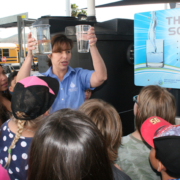
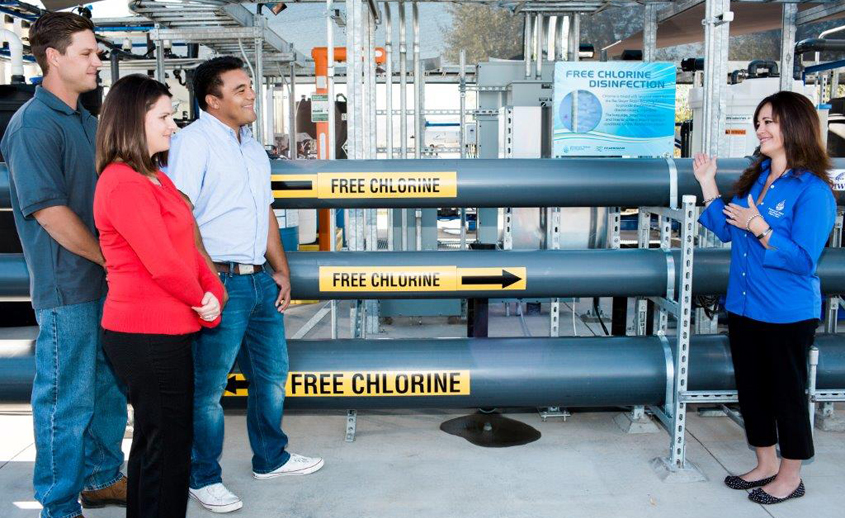


 Sweetwater Authority Logo 2019
Sweetwater Authority Logo 2019